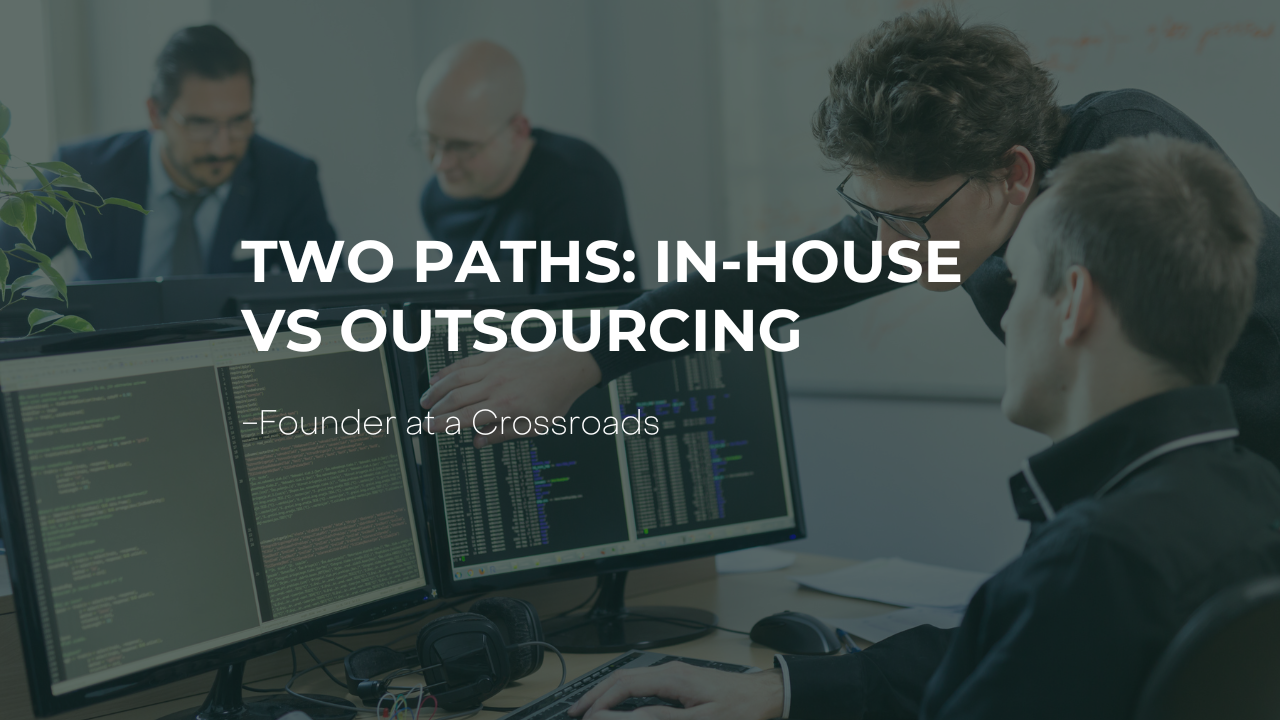When you’re building a tech product, the team you assemble is everything. But if you’re a startup founder, especially in the early stages, you’ve probably wrestled with the age-old question:
“Should I hire an in-house development team or outsource to a trusted partner?”
It’s not just about budget — it’s about speed, quality, flexibility, and ultimately, survival.
We’ve worked with dozens of EU and US tech founders who went through both paths — often learning the hard way. Here’s what they wish someone told them sooner.
🧱 1. Hiring Is Slower Than You Think
Hiring full-time developers takes time — sometimes 3 to 6 months to find, vet, interview, negotiate, and onboard just one engineer.
In contrast, an outsourcing partner can start in days, with a fully-formed team that’s already used to working together.
💡 “We lost four months trying to hire in-house. If we had outsourced earlier, we could’ve launched our MVP by then.”
— US SaaS Founder
💸 2. In-House Teams Come With Hidden Costs
Salaries are just the tip of the iceberg. Add benefits, office space, equipment, recruitment fees, and HR overhead, and your cost can balloon fast.
Outsourcing, on the other hand, offers predictable, all-inclusive pricing — especially valuable when runway matters.
📊 Example: A senior developer in the US might cost $150K/year, while the same quality from a Serbian team could be 40–60% less — with zero hiring friction.
🔁 3. Flexibility Is Everything in Early-Stage Startups
Hiring locks you in. What if your roadmap pivots? What if you only need full-speed development for 3 months?
Outsourcing lets you scale up or down based on actual product needs — without layoffs or morale issues.
🌍 4. Outsourcing Doesn’t Mean Giving Up Control
Founders often worry that outsourcing = losing product vision. But with the right partner, it’s the opposite.
A great dev team will align with your goals, give feedback, and even challenge assumptions. You stay in control — but with faster execution.
🛠 Pro Tip: Use tools like Jira, Slack, Loom, and Figma to stay in sync across time zones.
⚖️ 5. The Best Founders Blend Both
Many successful startups start with outsourcing, then hire in-house later — once they have traction, funding, and clearer needs.
Some even keep both models running long-term: a small internal team for core product, and a flexible outsourced team for feature velocity.
So… What Should You Do?
If you’re:
- Pre-revenue or bootstrapped
- In MVP or discovery mode
- Burning time trying to hire
- Or just want to move faster
Then outsourcing might be the strategic move that saves you time, money, and momentum.
And if you’re looking for a reliable partner — one that’s built for startup speed, fluent in product thinking, and based in Serbia’s growing tech scene — let’s talk.

Leave a Reply